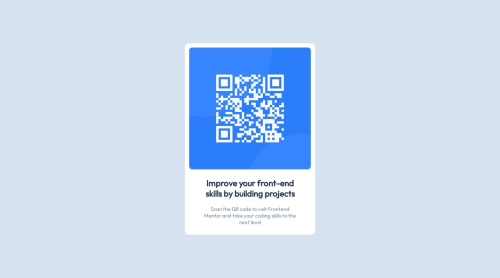My first attempt at front-end web development - A very basic solution

Solution retrospective
The style guide for this challenge mentioned a mobile and desktop width (mobile: 375px, desktop: 1440px) but I didn't really know what to do with this information. The mobile and desktop design looked the same so I ended up simply designing the card based on the mobile width. What would be a better way to use this information to create a responsive design?
I also struggled to center the card in the middle of the screen. After some googling I ended up using
body { margin: 0; position: absolute; top: 50%; left: 50%; transform: translate(-50%, -50%); }
but this seems like a band-aid solution. Is there a better way to vertically align elements on the page?
Please log in to post a comment
Log in with GitHubCommunity feedback
- P@danielmrz-dev
Hello @xirb22!
Your project looks great!
Using
positioncan be good for projects with just one centered element. But there's a better and more simple way to do it:- You can apply this to the body (in order to work properly, you can't use position or margins):
body { min-height: 100vh; display: flex; justify-content: center; align-items: center; }I hope it helps!
Other than that, great job!
And Happy New Year 😊
Marked as helpful - @MelvinAguilar
Hello there 👋. Good job on completing the challenge !
-
"mobile: 375px, desktop: 1440px" are just references to the dimensions from which the screenshots are taken; don't confuse them with breakpoints.
-
As mentioned, the solution using flexbox has been suggested, and I'll emphasize that using position: absolute on these elements is not a good idea, as it distorts the component on small screens
I hope you find it useful! 😄
Happy coding!
Marked as helpful -
- @alex931d
If you set the body 100% width and min-height: 100vh and use display flex and display justifiy-content center and align-items center then inside all elements vil be centered on y-x axles you should be learning flex if ur new to web dev
- @joshmichael23
You can use the widths as reference when inspecting the element and changing the width according to the design. That way you can see if your project matches the it. :)
Join our Discord community
Join thousands of Frontend Mentor community members taking the challenges, sharing resources, helping each other, and chatting about all things front-end!
Join our Discord